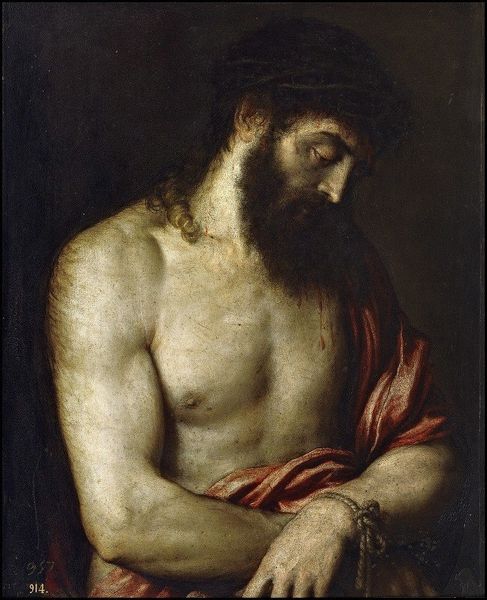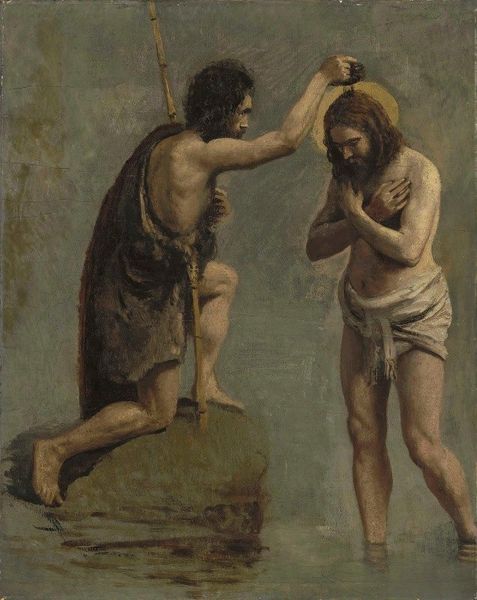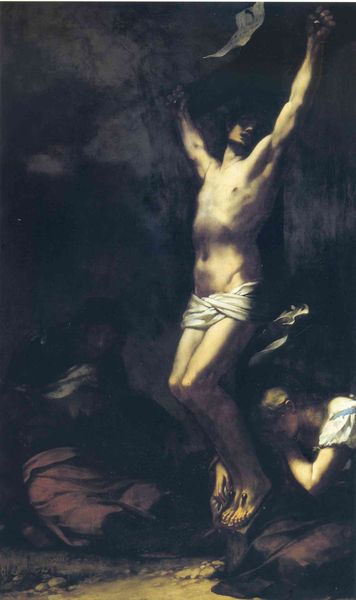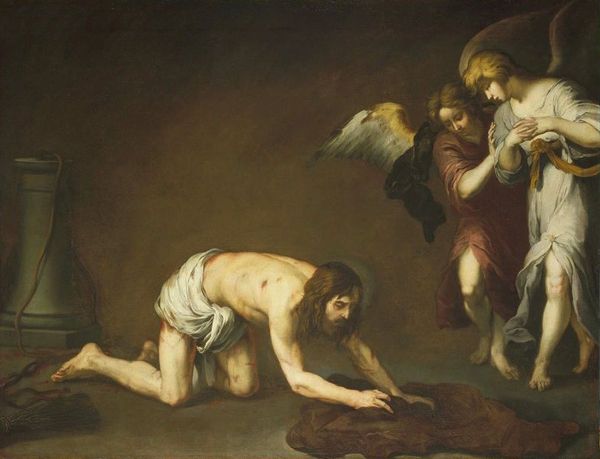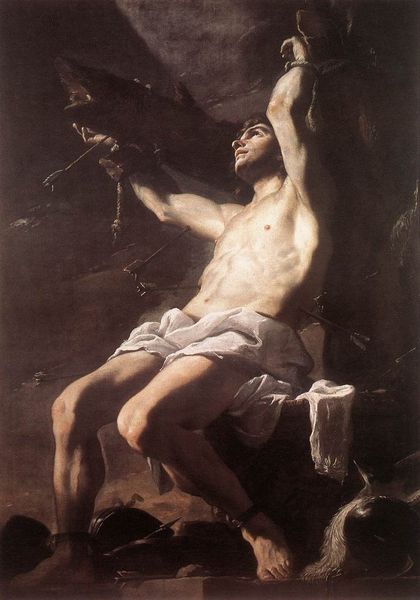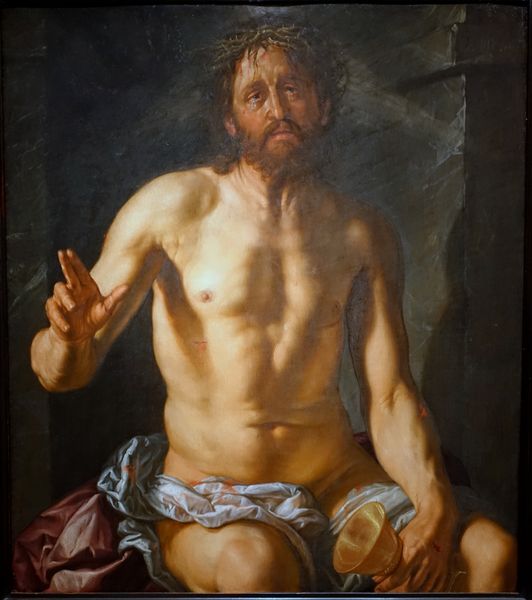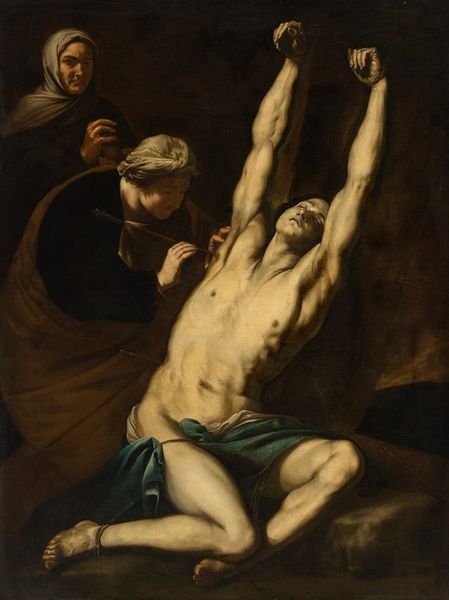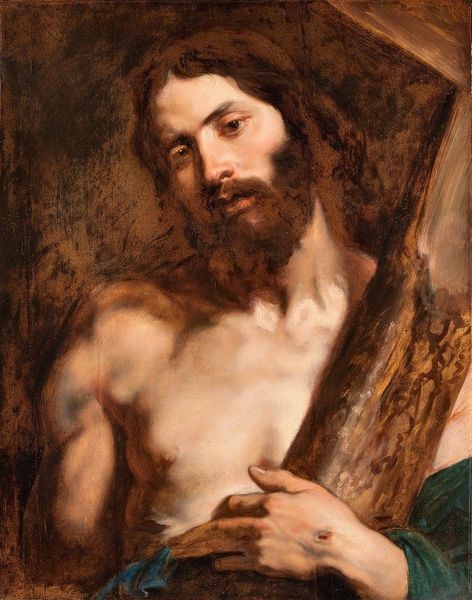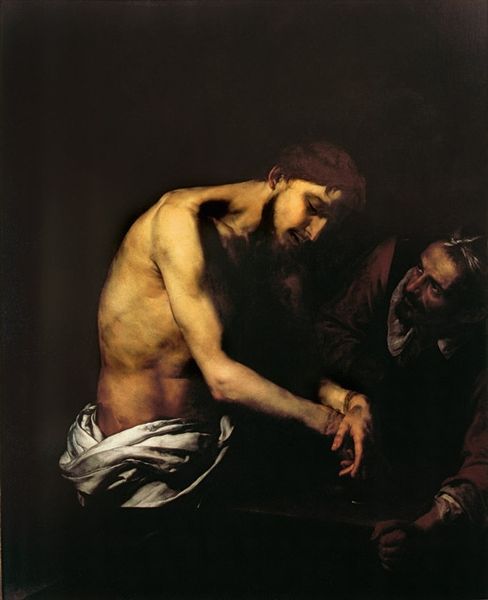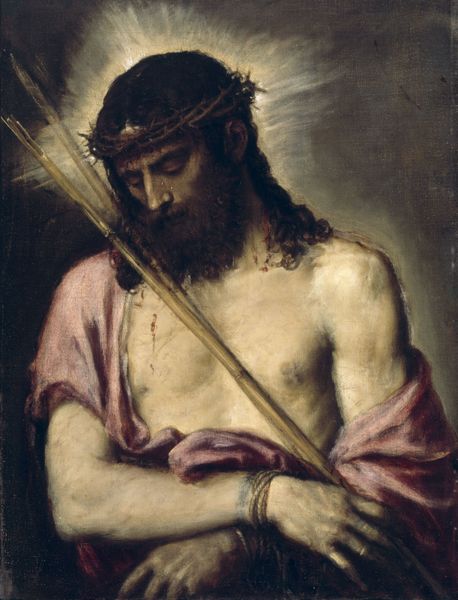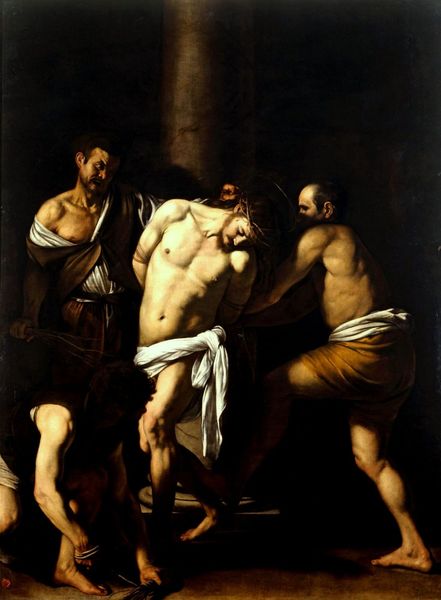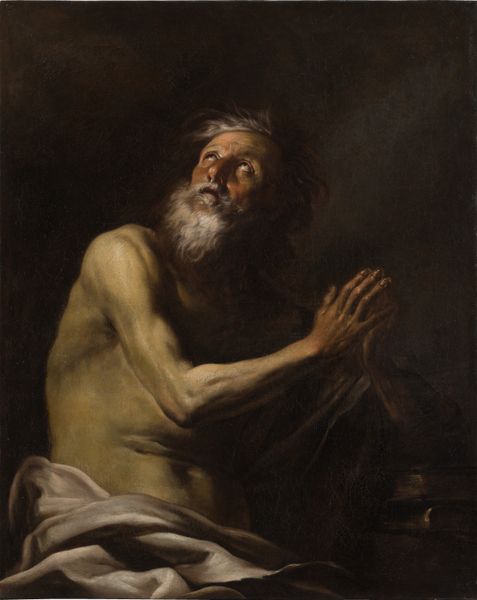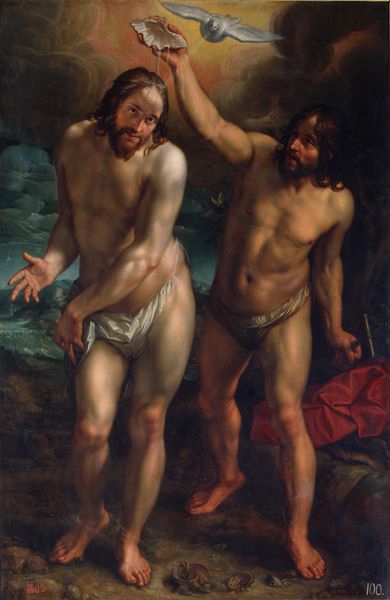
Christ after the Flagellation 1665
0:00
0:00
bartolomeestebanmurillo
Krannert Art Museum (University of Illinois at Urbana–Champaign), Champaign, IL, US
painting, oil-paint
#
portrait
#
baroque
#
portrait
#
painting
#
oil-paint
#
figuration
#
history-painting
#
christ
Dimensions: 127 x 146 cm
Copyright: Public domain
Editor: Here we have "Christ after the Flagellation," an oil painting from 1665 by Bartolomé Esteban Murillo. It's a surprisingly intimate portrayal of Christ. I am immediately drawn to how Murillo uses earth tones to highlight Christ's physical vulnerability after the torture. What strikes you when you view it? Curator: I’m interested in the materials. Think about the origin of these pigments – where did Murillo and his contemporaries source the materials to depict such scenes? Who was mining and processing these colors, and under what conditions? Was it a local, Iberian trade or were they coming from afar? That informs so much about the artist’s process. Editor: That's a perspective I hadn't considered! So, thinking about labor, it shifts the focus from the spiritual suffering of Christ to, say, the socio-economic structures underpinning the artwork's very existence. Curator: Exactly! Look at the canvas itself; what quality is it? Was it produced locally, or imported? How might this support local workshops? And the oil – what type of oil and where did it come from? The materiality of the oil paint gives it its richness, but is often ignored as part of the bigger picture of the making. Editor: It’s fascinating to consider those elements of production often overshadowed by discussions of artistic skill or religious iconography. Curator: Consider the distribution of the final product, too. Was this meant for a public church space, or the private collection of a wealthy patron? Who was consuming this image, and what did that act of consumption mean in 17th century Spain? It changes our whole understanding of the work. Editor: Thinking about how it was made, where it was made, and who got to look at it changes everything. Curator: It certainly gives us a more grounded, materially informed, perspective, wouldn’t you agree?
Comments
No comments
Be the first to comment and join the conversation on the ultimate creative platform.
